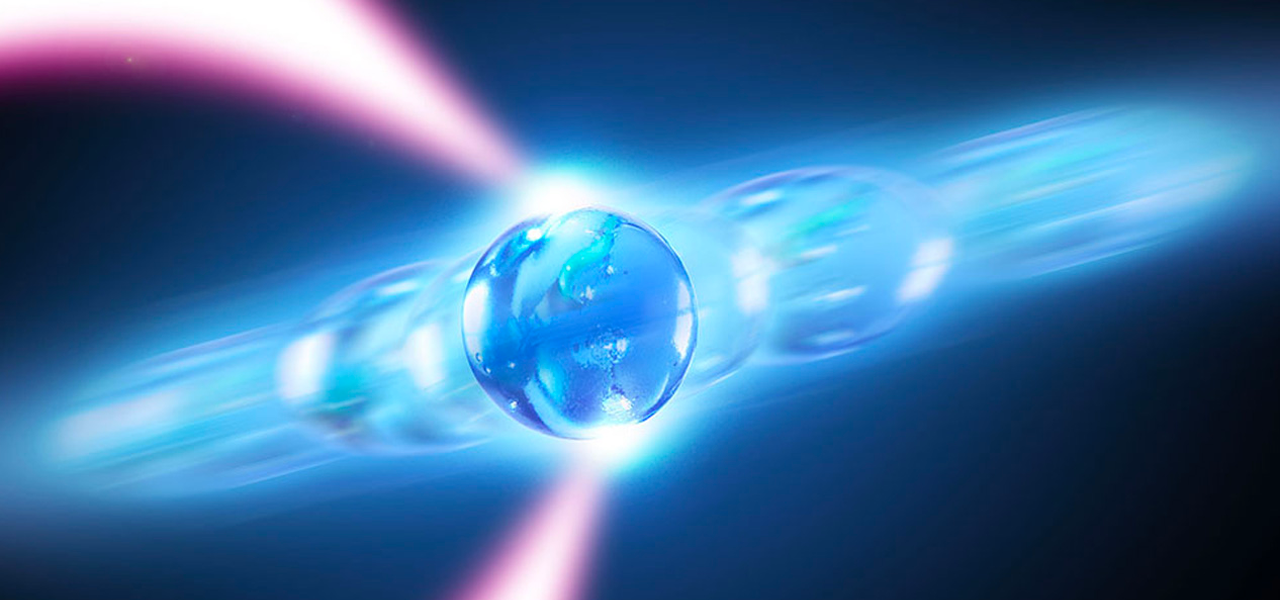SCIENTIFIC INSTRUMENTS: OPTICAL TWEEZERS
07 February 2022

Optical tweezers, which are highly focused laser beams, produce small optical forces in an order of piconewton to trap particles and cells whose sizes range from tens of nanometers to tens of micrometers. Over the past few decades, considerable progress has been made to improve the application of this technique.
Measurements of biomechanical properties inside living cells require minimally invasive methods, making optical tweezers particularly attractive as a tool. It uses the momentum of light to trap and manipulate micro-or nanoscale particles. A team of researchers led b Dr. Cornelia Denz from the University of Munster (Germany) has developed a simplified method to perform the necessary calibration of the optical tweezers. Scientists from the University of Pavia in Italy were also involved. (Results are published in the Scientific Reports Journal)
THE CALIBRATION:
Calibrations ensure that measurements of different samples and with different devices are comparable. One of the most promising techniques for calibration optical tweezers in a viscoelastic medium is the so-called active-passive calibration.
This involves determining the deformability of the sample under investigation and the force of the optical tweezers. The research team has now further improved this method so that the measurement time is reduced to just a few seconds. The optimized method thus offers the possibility of characterizing dynamic processes of living cells. These cannot be studied with longer measurements because the cells reorganize themselves during the measurement and change their properties. In addition, the shortening of the measurement time also helps to reduce the risk of damage to the biological samples due to light-induced heating.
SIMPLIFED:
The underlying procedure to perform the calibration works as follows:
- The micro- or nanometer-sized particles are embedded in a viscoelastic sample held on the stage of a microscope.
- Rapid and precise nanometer-scale displacements of the specimen stage cause the optically trapped particle to oscillate.
- By measuring the refracted laser light, changes in the sample's position can be recorded, and in this way, conclusions can be drawn about its properties, such as stiffness.
- This is usually done sequentially at different oscillation frequencies.
- The team led by Denz and Randhir Kumar, a doctoral student in the Münster research group, now performed the measurement at several frequencies simultaneously for a wide frequency range.
- This multifrequency method leads to a shortened measurement time of a few seconds.
- The scientists used solutions of methyl cellulose in water at different concentrations as samples. These have a similar viscoelasticity to living cells.
The development of optical tweezing by Arthur Ashkin was lauded with the 2018 Nobel Prize in Physics. Today, Optical Tweezers are used in biology and medicine, nanoengineering and nano chemistry.
As a leader in Scientific Equipment Repair and medical equipment calibration, Scientific Instrument Center works with many corporations, universities, and hospitals providing the highest level of laboratory services.
Keeping your lab equipment in peak condition is vital if the results are going to be accurate and reliable. Scientific Instrument Center (SIC) is your trusted company for laboratory equipment repair and maintenance services. If you have questions about your laboratory equipment and would like to discuss options for repairing or maintaining the equipment, please contact us at (614) 771-4700.
Our skilled staff members understand the nuances of instrument calibration and the manufacturers train our technicians, so any inspections we make mean your equipment is to quality standards. For more than 30 years, SIC has served businesses that use a wide variety of diagnostic and scientific equipment. We are specialists.
Get a free consultation. Call (800) 686-8965